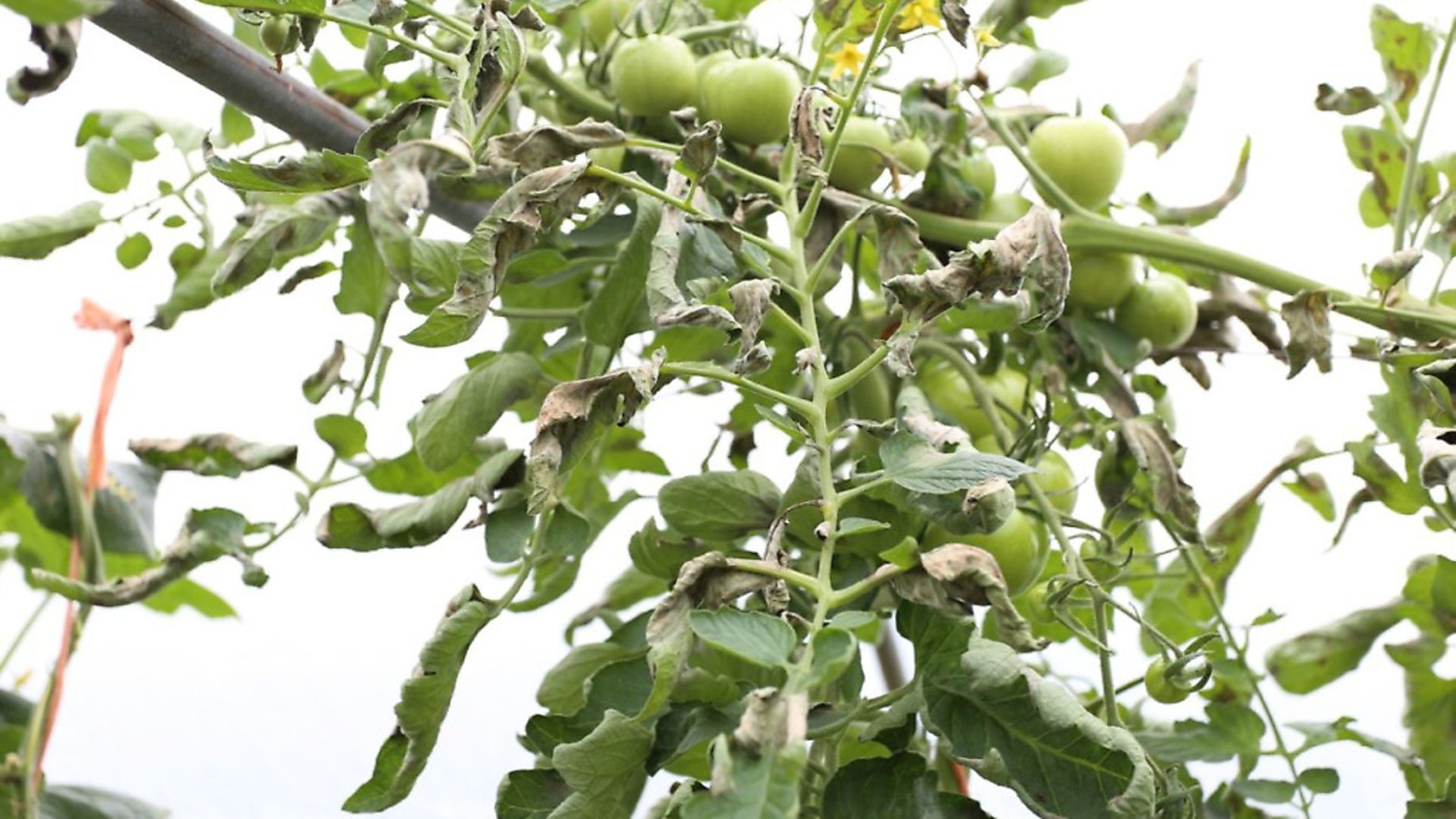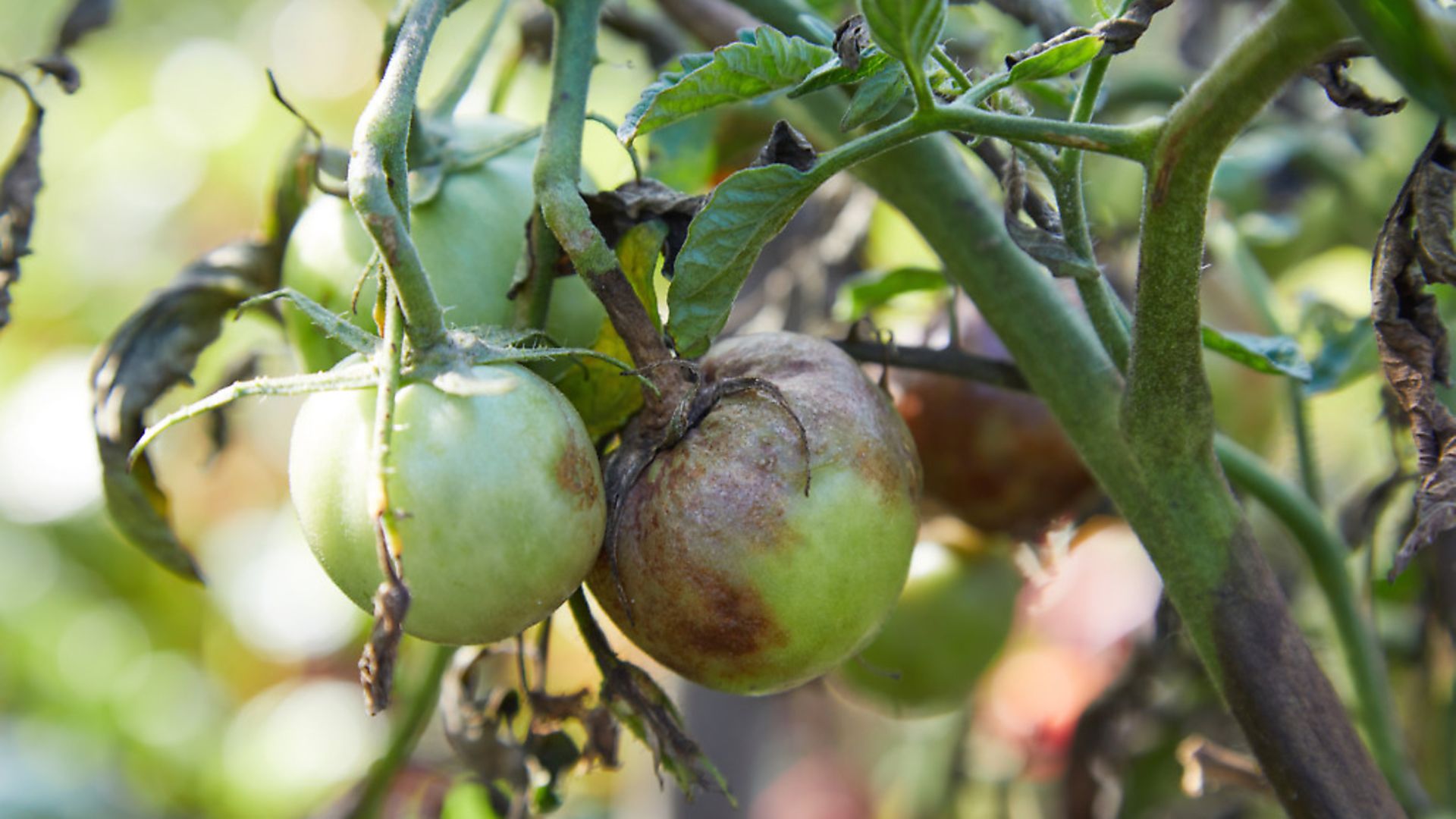Tomato blight has ruined many harvests in 2021; find out how to spot tomato blight, what causes it and how to treat it

Blight is a disease to avoid if you can, for example, by using resistant varieties of outdoor tomatoes; prevention is better than cure here. With non-resistant strains, in damp weather leaves wilt and turn translucent as they die very rapidly.

What does tomato blight look like?
If you are not sure about recognising it, check the photos. Blight is not the only reason for leaves to show brown edges or spots. The standout feature of blight is floppiness of leaves, together with blackening of some stems.
What causes tomato blight?
Blight can occur even out of the rain in a greenhouse or polytunnel, from wetting leaves during watering, from rain blowing in, or from leaves being in contact with damp polythene.
What to do if you have tomato blight
As soon as you see it, cut off all infected leaves in order to prevent spores from entering plant stems. If it does, tomatoes will turn brown and start to rot before or during ripening.
Potato blight
Check for blight on potato leaves. If the weather is still damp, it is best to cut the stems at ground level, then put all of the stem and leaves to compost. I always compost blighted material and the disease does not survive in a heap. Blight spores die in soil and compost once they have no more plant material to live off.
Potatoes can be left in the soil, but I suggest harvesting them before slugs start eating them and then you can plant more vegetables. Sarpo potato varieties resist blight. However, they require harvesting in late August before the tubers become too starchy.
Image(s) provided by:
Getty Images/iStockphoto
Getty Images/iStockphoto







